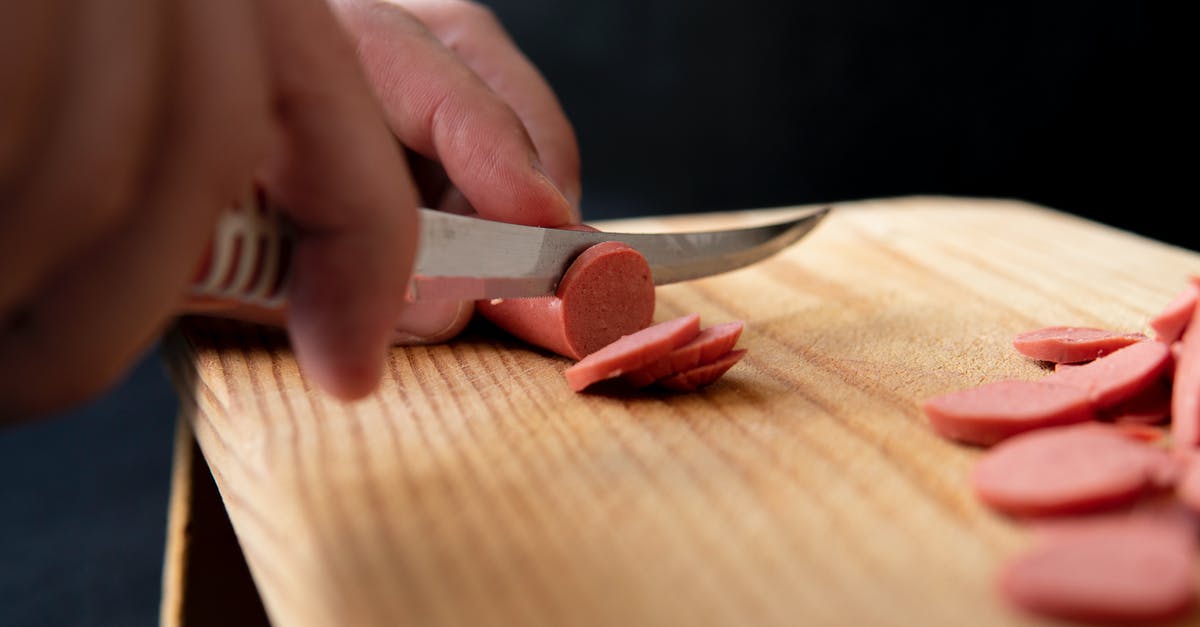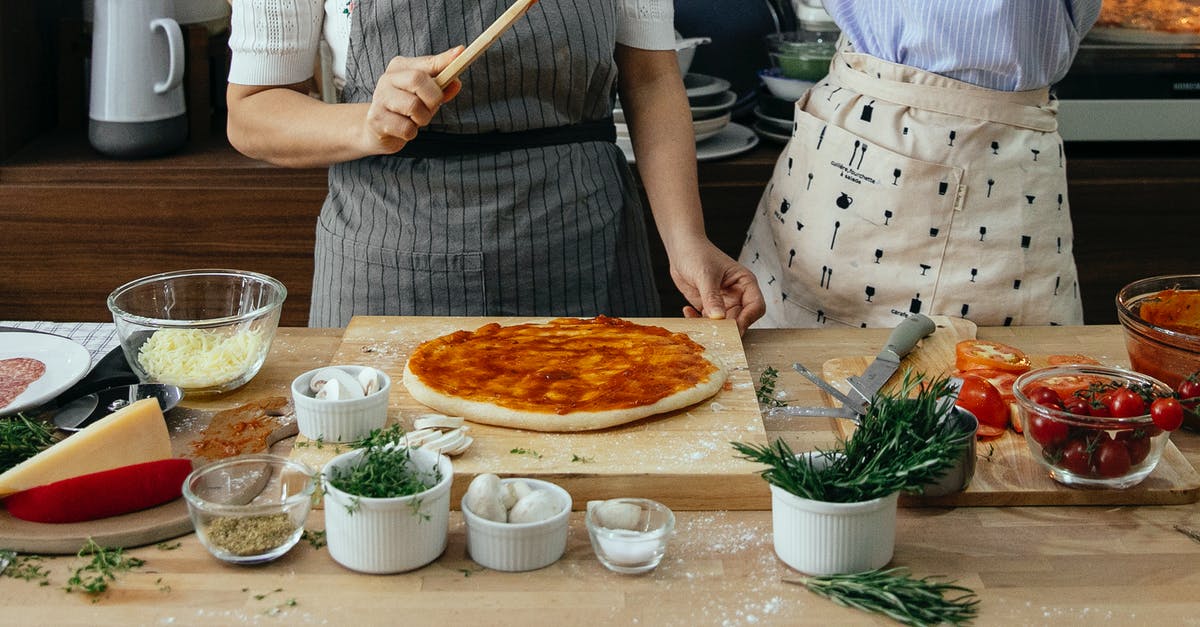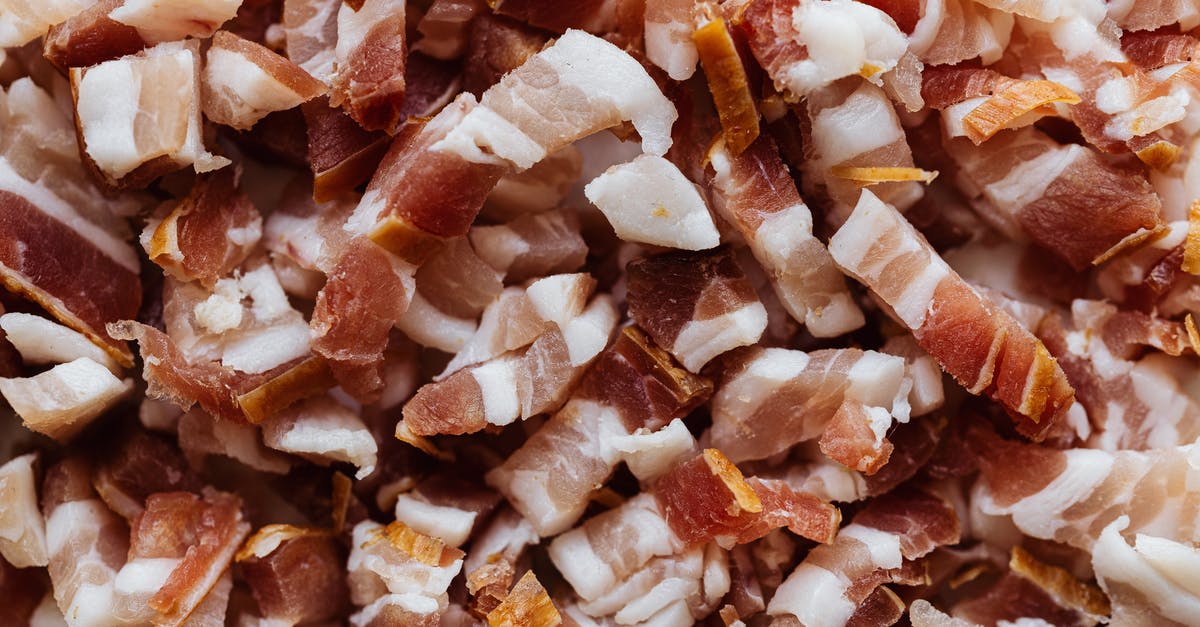Telling if small pieces of meat are cooked - blind or colour blind chef

When I am cooking small pieces of meat (so a meat thermometer is not an appropriate tool - I'm thinking of things like shredded chicken being stir-fried, frying or grilling slices of bacon, or minced beef being browned in a pan) I tell whether it is cooked yet by the change in colour in the meat. Chicken goes pink -> creamy white, bacon goes pink -> a different shade of pink, beef goes reddish pink -> brown, etc.
How does a blind, or colour-blind, chef manage? If going purely by time of cooking you will surely either end up with some pieces undercooked or the whole lot overcooked to compensate for that. Also it depends so much on the exact size of the pieces of meat, in the case of a grill how close the meat is to the heat, etc.
This is not a purely theoretical question - my husband is colour blind and really struggles with this. He cannot see the relevant colour differences at all, and although there are some texture changes on the outside of the meat, that doesn't tell you that the pieces are cooked all the way through.
Best Answer
Texture. Although I can see perfectly, I use texture to tell me if pasta is done, for example. It's obvious for spaghetti but I do it for macaroni too, or any shapes. Just stirring a pot full of boiling water with raw macaroni, then stirring a pot full of boiling water and cooked macaroni, is a very different experience. Stir frying raw meat, partly cooked meat, and cooked meat will also feel different. Grilling meat is definitely a time for everyone to use texture, probably some variant of the press-the-ball-of-your-thumb rule.
To a lesser extent, smell. This is what I rely on to evaluate baked and roasted things, long before I open the oven to look at them or touch them. It won't help you grill a steak though.
FYI, I asked Christine Ha on Twitter, and she replied
By feeling the texture of the meat… And also not being afraid to taste
Which is as close to "from the horse's mouth" as it seems we will get in this thread.
Pictures about "Telling if small pieces of meat are cooked - blind or colour blind chef"



the blind cook chinese Chef
More answers regarding telling if small pieces of meat are cooked - blind or colour blind chef
Answer 2
For meat, get a piece with a fork and put it on a plate. Cut it in half and you will see the point of cooking inside (mor soft and juicy). With experience you will learn to calculate how much time is left.
For fish, the meat should come off easily, a piece from each other piece. Here, too, you should not go over with the cooking because it becomes hard noon.
For boiled or rosted potatoes, take a potato or a piece of potato on a fork and hold it over the pot, so that the potato is downwards. If the potato slides off fork by itself and tend to fall down in the pot. it means that it is cooked.
The peas are cooked in the pan when they are "wrinkled." But just in this moment, otherwise they become hard.
A cake is cooked when inserting a toothpick in the dough, this comes out clean. If it is moist, the cake is not yet cooked.
For most of the other foods, you can observe the shape and texture, you can calculate the time, or taste the flavor directly.
Answer 3
Here are some suggestions. You will need to tune this method, but it's better than no method.
Provided that you have the heat set correctly (see below), when the meat gets closer to being cooked (and as some of the water in the meat evaporates), the sound of the sizzle changes and you hear less sizzling and kind of quiet.
There is something to this. Often times when I'm away from the frying pan, I can hear the pan is ready or requires a stir since the sizzling characteristics change.
For strips of meat like stir fry and chicken strips, the pieces get less floppy as they cook. A piece of raw chicken dangles right off the cooking tongs whereas a properly cooked one holds firmer.
Finally, you can use time to cook to perfection every time. 3-4 minutes usually for minced meat, as long as you follow the same process. Here's an example from Cooks Illustrated:
Heat 12- or 14-inch nonstick skillet over high heat, 4 minutes (pan should be so hot,
you can hold your outstretched hand 1 inch above its surface for no more than 3
seconds); add 1 tablespoon oil (add 2 tablespoons for tofu or fish) and rotate pan so
that bottom is evenly coated. Let oil heat until it just starts to shimmer and smoke.
Check heat with hand. Drain meat, seafood, or tofu, then add to pan and stir-fry until
seared and about three-quarters cooked (about 20 seconds for fish, 60 seconds for meat,
2 minutes for tofu, 2 1/2 to 3 minutes for chicken). Spoon cooked meat or seafood into
serving dish. Cover and keep warm.
What you're looking for in the pan, is temperatures of about 350F. For your set up, I would highly recommend a quality infrared thermometer. This not to measure the meat (the surface won't say much), it does however tell you how hot the pan is, and you can easily establish how long it takes to properly cook 6 ounces of a meat. This does not require any visual inspection as long as the contents of the pan is moved around and a frying time table is follow.
I did hear (either Jack Bishop Cooks Illustrated, or Nathan Myhrvold) saying that it takes about 4 minutes to pan fry 1/2 inch depth of meat. I can't find the exact reference and values in my notes, but the point is that there is a deterministic solution to time to fry in a pan.
Answer 4
If you're only colour blind then for red meat (especially steak) you can see the blood come out on the surface when it is ready to turn. When the blood/juice comes out the other side it is cooked to about medium.
Sources: Stack Exchange - This article follows the attribution requirements of Stack Exchange and is licensed under CC BY-SA 3.0.
Images: SILVI ARANDA, tugay aydın, Katerina Holmes, Karolina Grabowska
